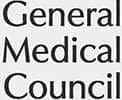
Updated: 01 January 2024
Low testosterone levels, or “low T”, can cause various problems, and the benefits of testosterone replacement therapy (TRT) can be significant. If you are considering testosterone replacement, it is important to consider if it is right for you and understand the risks to make an informed decision.
At Harley Street MD in London, we always want our clients to know as much as possible about any treatment we can provide. This is why we aim to answer your questions in this post so you may better understand the benefits and risks of testosterone replacement therapy in the UK.
There are a few types of testosterone replacement therapy available at our UK-based clinic — but whether transdermal gel, tablets or injections, testosterone replacement therapy serves to “top-up” the testosterone levels for men who are suffering from the effects of low levels.
Before we jump into exploring whether or not testosterone replacement therapy is safe or right for you, let’s discuss a few of the signs and symptoms of having low testosterone, also known as “hypogonadism”. You can do many things to stay healthy as you age, including eating a high-protein, low-fat diet, not smoking, and keeping active. But one consequence of ageing for some men is a decrease in testosterone levels.
After the age of 30 to 40, testosterone typically starts to decline by around 1% a year. This means that depending on when your levels start to decline, men will often benefit from testosterone replacement around the age of 50 to 60.
Symptoms of lower testosterone levels include:
Of course, it is unlikely that you will experience all of the above side effects as a result of low testosterone levels. There are also other reasons you could suffer from any of the above symptoms, including thyroid issues, side effects from medications, diabetes, and mental health conditions.
Although testosterone will naturally decrease as you age, it is possible to experience low testosterone levels at any age.
This may be a result of several external factors, including:
If you are experiencing any or all of these symptoms, you might want to explore testosterone replacement options for men. At Harley Street MD, we can administer safe testosterone replacement therapy in London, UK.
According to the American College of Cardiology, recent studies have suggested that there is no strong link between testosterone replacement therapy and increased cardiovascular risk — which is helpful to know if you’re wondering, “Is testosterone therapy safe?”
The study took place over two years and found that older men (who were all between 45 and 80) who took testosterone hormone gel every day had the same risk to heart health as those who were taking the placebo. However, this is not to say that it doesn’t come without any risk at all and should be used without consulting a testosterone treatment medical doctor.

Testosterone therapy is available in skin and gum patches, gels, injections, and subcutaneous pellets. The best way to take testosterone replacement therapy will depend on your preference and how your body reacts.
| TRT Options | Pros | Cons |
| Patch (skin) | Simple to use | Skin rashes |
| Buccal patch (gum) | Simple to use | Irritation and gum disease |
| Gel | More control over dose | Must avoid clothing in contact with area applied for several hours |
| Nasal gel | More control over dose | May cause nasal problems |
| Injections | Inexpensive and convenient | Testosterone levels fluctuate between injections. |
| Subcutaneous pellets | Convenient and last for three to six months | Require minor surgery and can not be removed without surgery. |
Let’s explore a few of the most commonly asked questions about THT, surrounding the question, “Is testosterone replacement therapy safe?”
Before starting testosterone replacement therapy, you need to have an accurate diagnosis of low testosterone levels. There are testosterone testing kits that can be purchased to use at home. However, if the results are inaccurate or not correctly interpreted, you could be wasting your money.
A full TRT screening at a clinic specialising in testosterone therapy, such as Harley Street MD in London, is the safest way to ensure an accurate diagnosis. During a full TRT screening, you will have additional tests, including anaemia, leukaemia, kidney and liver function, bone metabolism, diabetes, thyroid function, and prostate cancer. You can start testosterone replacement therapy on the same day you receive your diagnosis, following your screening.
If administered by a professional medical doctor who can ensure it is safe, testosterone replacement therapy can offer multiple benefits. The benefits of testosterone replacement are far-reaching and can drastically improve symptoms of low testosterone. Additionally, there are other health benefits that can increase the overall quality of life, such as:
Once you start to feel the benefits of testosterone therapy, other positive lifestyle changes are often much easier to implement. With increased energy, you might enjoy getting more active, and a good sex life can have a range of positive effects on your health.
Although improved mental clarity isn’t going to protect from the risk of dementia, research does indicate that a combination of regular exercise and keeping the brain active may lower the chance of cognitive decline.
Testosterone replacement for men has lots of benefits, but it should always be approached by a medical professional. For safe testosterone replacement therapy in London, UK, book a free consultation with Harley Street MD.
One of the reasons you may be interested in testosterone replacement is if you struggle with erectile dysfunction (ED). Getting an erection without the need for Viagra can help give you the confidence to start a new relationship or reconnect with your partner sexually. Low testosterone levels have been linked to difficulty getting or maintaining an erection.
Our clinic in London has helped hundreds of men with erectile dysfunction. Many of our clients have told us that since starting testosterone therapy, they find it easier to get an erection and have noticed a boost in their sex drive. However, if low testosterone is not diagnosed at your TRT screening, we can provide you with alternative treatment options.
Research supports the safety of testosterone replacement, but a small percentage of men do experience short-term and long-term side effects.
Short-term side effects of testosterone therapy include:
Yes, NHS testosterone replacement therapy is possible, but it will not be offered in every instance, as the level of testosterone in the blood has to be particularly low to qualify for it. There also might be a long waiting period due to the chronic underfunding of the NHS. These elements might contribute to the decision to go with a private medical doctor for testosterone replacement therapy.
There are many ways that TRT can be administered — at our London clinic, Dr Chia Tan can offer testosterone replacement therapy via transdermal gels, injections or tablets.
Testosterone replacement therapy is a treatment that needs to be carefully considered by an experienced medical professional. Harley Street MD is registered with the Care Quality Commission (CQC) that prescribes testosterone replacement hormone injections in London. Administered by the revered Dr Chia Tan, TRT from London’s Harley Street MD is a trusted source of testosterone replacement therapy in the UK.
You will require blood tests at three and six months after starting testosterone replacement therapy. You will then need an annual test to check you’re on the correct dose of testosterone therapy.
Testosterone can increase the body’s production of red blood cells; therefore, red blood cell levels will also be checked when you have blood tests after testosterone replacement therapy. This is because polycythemia (blood that is overly thick due to too many red blood cells) is a common effect of testosterone replacement therapy. If this occurs, therapeutic venesection will be needed to restore balance in the blood through levels of haemoglobin and haematocrit.
Additional tests may include a bone density test if you have osteoporosis and prostate cancer tests if you had elevated PSA levels when you started your testosterone therapy. There is no limit on how long testosterone replacement therapy can be taken; typically, men remain on it long-term to prevent a recurrence of the symptoms of low testosterone.
Looking for safe testosterone replacement therapy in the UK? Don’t risk an incorrect diagnosis; come to our clinic in London for hormone-level tests with our UK-qualified doctors, who are testosterone experts. Further to a full TRT screening and diagnosis, you will have immediate access to testosterone replacement therapy.
Book a consultation at our London clinic for confidential health advice and an accurate diagnosis of low testosterone. At Harley Street MD, we offer all types of TRT treatment and Therapeutic Venesection options, and our men’s health experts will listen to your preferences.







